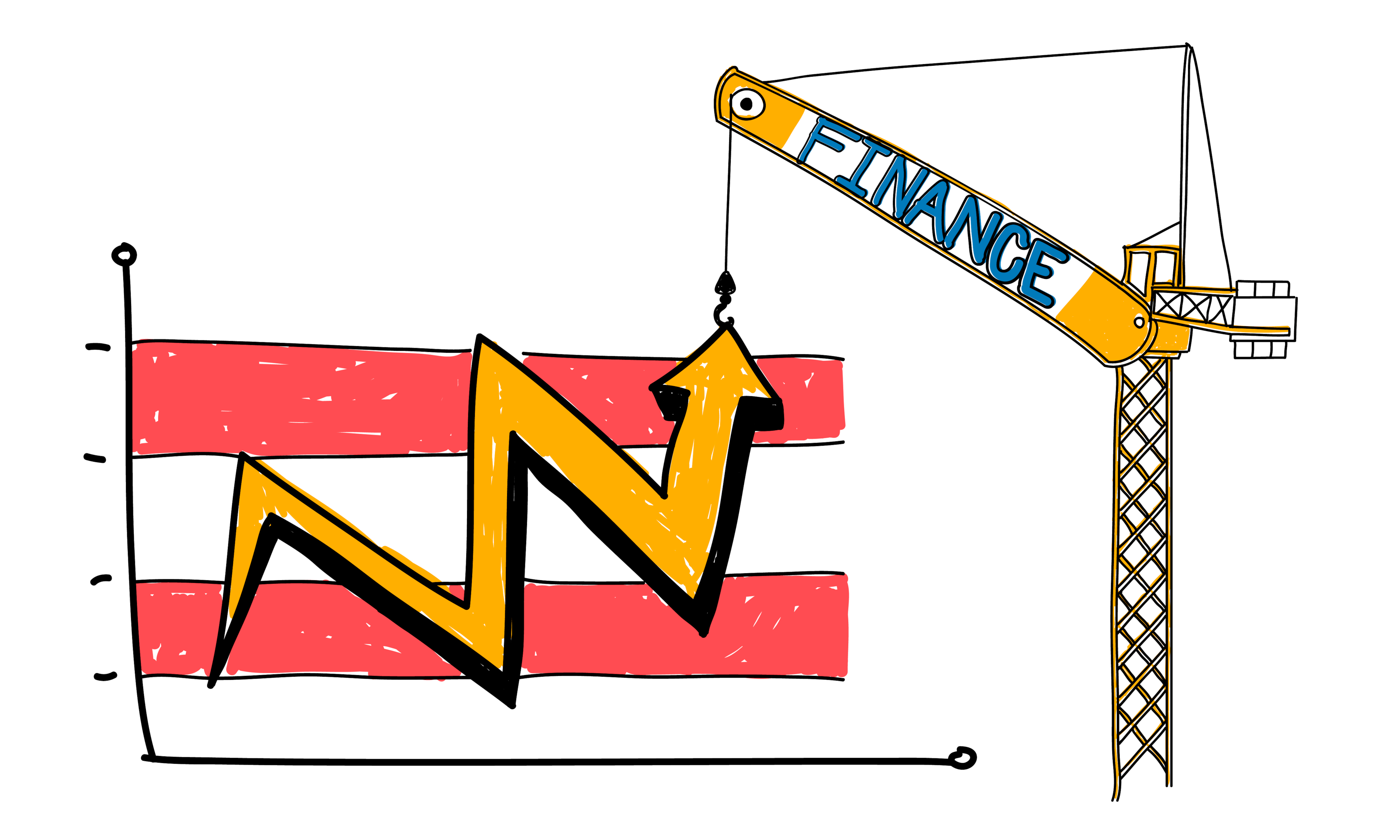We’ll increase conversions by
20-100+%
on your website.
Get a FREE Audit today
See how we can help your business increase conversion rates
The Power Of Scarcity Marketing: Understanding And Implementing The Scarcity Principle In Your Business Strategy

Introduction
In the world of marketing, one principle has stood the test of time when it comes to creating high demand for products or services: we use the scarcity principle. The scarcity principle taps into our fear of missing out (FOMO) and can drive consumers to make a purchase when they perceive an item to be in limited supply.
By understanding and implementing effective scarcity marketing tactics, businesses can boost sales, improve customer engagement and loyalty, gain a competitive advantage and build their brand image. In this blog post, we’ll dive deep into the power of scarcity marketing – principles behind it, benefits, implementation strategies, the psychology behind it, etc., so keep reading!
Understanding The Scarcity Principle
The scarcity principle is a behavioral science concept that describes how limited availability of a product or service can increase its perceived value and desirability among consumers.
Definition And Explanation
The Scarcity Principle is a marketing tactic that capitalizes on the fear of missing out (FOMO) to encourage customers to make purchases or take action quickly. It is based on the economic theory that when supply decreases, demand will increase, driving up the perceived value of a product in the market. This principle suggests that by highlighting low supply or limited availability, businesses can create urgency and boost sales for their products or services.
Behavioral Science Behind The Scarcity Principle
The scarcity principle is deeply rooted in human psychology, and understanding psychological principle and the behavioral science behind it can be critical to implementing effective scarcity marketing strategies. Behavioral economists have found that people tend to place a higher value on things that are scarce or hard to obtain, which makes them more desirable. This tendency can be attributed to our fear of missing out (FOMO) and our innate desire for social proof.
Moreover, research has shown that limited availability leads consumers to view products as high in demand, which then creates an urgency to purchase before they are gone. People also like feeling special and being part of a select group who own something exclusive or rare. By leveraging these psychological principles in your business strategy, you can encourage customers’ purchasing behavior while simultaneously driving up perceived value and boosting sales.
Components Of Scarcity
The Scarcity Principle has three essential components: supply, demand, and urgency. Supply refers to the limited availability of a product or service in the market. Demand is when consumers desire or need that scarce product, or service. Urgency creates a sense of importance and motivates customers to act quickly. The combination of these three components drives consumers to view scarce products as more valuable than those readily available.
Scarcity marketing leverages these components by creating perceived scarcity through tactics such as limited-time offers free gift back, exclusive deals, and limited editions. By appealing to consumers’ fear of missing out on a valuable opportunity, scarcity marketing can boost sales and create customer loyalty. However, it’s important to note that proper execution is crucial to avoid fake or unethical sales practices that may harm your brand reputation.
Incorporating the principles of scarcity into your business strategy can help you stand out in a crowded marketplace by creating higher demand for your products or services while driving revenue growth.
Benefits Of Scarcity Marketing

Scarcity marketing offers a range of benefits, including increased sales and revenue, improved customer engagement and loyalty, competitive advantage, and building a strong brand image.
Increased Sales And Revenue
One of the primary benefits of implementing scarcity marketing in your business strategy is the potential for increased sales and revenue. By creating a sense of urgency around your products or services, you can encourage customers to act quickly and make a purchase before supplies run out. This can lead to higher conversion rates and more sales overall.
Furthermore, when customers perceive a product to be in high demand or limited availability, they may be willing to pay more for it. In other words, scarcity marketing can help boost the perceived value of your products or services, allowing you to charge higher prices and increase profit margins. By leveraging the principle of scarcity effectively, businesses can enjoy significant boosts in revenue that would otherwise not be possible.
Improved Customer Engagement And Loyalty
Scarcity marketing is not just about driving sales and revenue, it also has a profound impact on customer engagement and loyalty. By creating an aura of exclusivity around the products or services offered, customers feel that they are part of an elite group that has access to limited resources. This sense of belonging and prestige can lead to increased brand loyalty as well as positive word-of-mouth advertising.
Furthermore, when customers perceive a product or service as scarce or in high demand, they are more likely to act quickly and make a purchase. This urgency creates excitement around the brand which can result in increased demand and repeat business from existing customers. In fact, studies have shown that businesses who effectively use scarcity marketing tactics have up to 2x higher retention rates than those who don’t.
Competitive Advantage
Scarcity marketing can help businesses gain a competitive advantage over their rivals. By creating a sense of urgency and exclusivity, they can entice customers to act quickly and make purchases before it’s too late. This not only drives sales but also helps establish the brand as one that offers unique opportunities for consumers.
One example of this is when limited edition products are launched, creating a buzz around their release. Consumers may be willing to pay more or even wait in line for hours just to get their hands on these rare items, giving the business an edge over competitors who don’t offer such exclusive offerings. With scarcity marketing tactics, businesses can increase customer engagement and loyalty while simultaneously setting themselves apart from others in their industry.
Building A Brand Image
Implementing the scarcity principle can help businesses create a strong brand image. Limited supply and high demand often lead to greater publicity and increased interest in products or services. This creates a sense of exclusivity around the brand, which attracts customers who want to be part of an exclusive group.
When consumers associate your brand with the scarcity principle work in your marketing, they are more likely to see it as premium or luxury. Implementing ideas like timed sales or limited edition product runs can give customers that feeling of exclusivity while boosting sales. Brand image is essential for long-term business success, and implementing the scarcity principle will set you apart from other market competitors.
Implementing The Scarcity Principle In Your Business Strategy

Learn how to create a sense of urgency, offer exclusive deals, leverage social proof, and communicate scarcity effectively in order to boost sales and improve customer engagement by implementing the Scarcity Principle in your business strategy. Read on for practical tips and real-life examples.
Types Of Scarcity Marketing
There are different types of scarcity marketing that can be employed in a business strategy. Exclusivity is one tactic that creates a sense of importance and perceived value for customers. Rarity, on the other hand, involves offering only limited quantities or a limited time offer or-limited availability to drive sales.
Urgency is another type of scarcity marketing where businesses use countdowns, timers or deadlines to keep demand equilibrium create FOMO (fear of missing out) among consumers. Finally, excess demand may involve creating hype around a product launch or utilizing word-of-mouth marketing to generate buzz around an item in high demand. By employing different scarcity tactics depending on the particular product or service, businesses can increase their chances of success while also building brand loyalty amongst existing customers through limited edition products and promotional offerings.
Creating A Sense Of Urgency
One effective way to implement the Scarcity Principle in your business strategy is by creating a sense of urgency among customers. This can be achieved by highlighting the limited availability of your products or services, and emphasizing that they may not be available for long. Studies have shown that consumers are more likely to make a purchase when they feel like time is running out.
Another tactic to create urgency is offering limited-time promotions or discounts. By setting a deadline for these deals, customers are more likely to act quickly in making a purchase before the offer expires. It’s important to note that creating urgency should still align with ethical marketing practices, as misleading or false claims can harm your brand image and lead to customer distrust.
Offering Exclusive Deals
One effective way to implement the scarcity principle in your business strategy is by offering exclusive deals. By limiting access to a product or service, you can create a sense of urgency and increase its perceived value. This tactic works especially well for products that are only available for a short period or have limited quantities.
For example, Flash sales are an excellent way for online store to offer exclusive deals while creating a sense of urgency among potential customers. Online retailers like Amazon and Zulily use flash sales to sell off their overstocked items quickly. These limited-time offers can attract new customers who may not be aware of these brands before and encourage them to make a purchase before time runs out.
Leveraging Social Proof

Leveraging social proof is an effective way to encourage customers to make a purchase. Sales and marketing teams can showcase social proof by highlighting customer behavior and testimonials. By doing so, potential buyers are more likely to trust in the quality of your products and feel confident in their decision-making process.
Social proof is a powerful ingredient for marketing and can be used creatively on social media to boost your brand. Sharing positive reviews or feedback from existing customers helps build trust with potential customers who may not have previously heard of your business. Additionally, by featuring user-generated content (UGC) such as photos or videos of satisfied customers using your products, it creates a sense of community around your brand which further strengthens loyalty among existing customers.
Communicating Scarcity Effectively
Communicating scarcity effectively is a crucial aspect of implementing the scarcity principle in marketing. One way to do this is by using clear and concise language that effectively communicates the limited availability or time-limited nature of a product or service. This can be accomplished through various means, such as using bold font, countdown timers, or limiting the amount of product available.
Another effective method for communicating scarcity is by leveraging social proof. By showcasing how many other customers have already purchased the limited item, potential buyers may feel more motivated to purchase quickly before it sells out entirely. Additionally, providing customer testimonials or reviews can further reinforce the high demand and low supply nature of your product or service.
Avoiding Common Pitfalls
While scarcity marketing can be highly effective, there are some common mistakes that businesses should avoid. One mistake is creating false scarcity by falsely claiming a product is limited or in high demand when it’s not. This can lead to negative reviews and harm the company’s reputation.
Another pitfall to avoid is failing to communicate the product scarcity effectively. If customers don’t understand why a product is scarce or how long it will be available, they may lose interest instead of feeling motivated to make a purchase. It’s important to clearly explain the reason for the scarcity and provide a sense of urgency without coming across as pushy.
The Psychology Behind Scarcity Marketing

Behavioral economists have found that the fear of missing out (FOMO) is a powerful psychological trigger that drives consumers to make a purchase when they perceive market price for an item to be scarce, making scarcity marketing an effective sales tactic.
Key Theories And Research

One of the key theories behind the scarcity principle is that humans place a higher value on things that are perceived as scarce. This has been supported by numerous studies showing that people are more likely to purchase products when there is limited availability or when they believe the product may not be available in the future. Additionally, research has found that consumers often view scarce resources as having greater intrinsic value even if they have no practical use for them.
Another aspect of scarcity marketing is leveraging social proof, which refers to the idea that people are more likely to adopt a certain behavior if they see others doing it. For example, adding messages like “only 3 left in stock” or “limited quantities available” can create a sense of urgency and encourage potential customers to make a purchase before it’s too late. Research has shown that using social proof can boost sales by up to 92%, making it an effective tactic for businesses looking to increase revenue through scarcity marketing.
Overcoming Objections
Even with a well-executed scarcity marketing strategy, some customers may still hesitate to make a purchase. However, businesses can overcome objections by addressing concerns and providing reassurance. For example, offering a satisfaction guarantee or emphasizing the quality of the product can ease customers’ fears about making a quick decision.
Moreover, creating urgency without being pushy is important when implementing scarcity marketing tactics. By highlighting the limited availability or time-sensitive nature of an offer in a clear and authentic way, businesses can encourage customers to act quickly while also maintaining trust and credibility. This approach helps reduce objections around “missing out” on the opportunity to take advantage of a scarce offer.
Potential Risks And Downsides To Consider
While scarcity marketing can be a powerful tool for any business, it is essential to consider the potential risks and downsides before diving in. For one, implementing scarcity tactics without careful consideration can lead to disengagement or even negative feedback from consumers who feel manipulated.
Another potential risk to keep in mind when leveraging scarcity tactics is that they may not always result in increased sales or revenue. In some cases, creating artificial limitations on product availability may actually hinder consumer demand and discourage purchases. It’s important to carefully analyze data and metrics related to consumer behavior and market trends before deciding which scarcity techniques are right for your brand strategy.
Successful Scarcity Marketing Campaigns

Image source: https://www.bptrends.com/
Several brands have successfully implemented scarcity marketing campaigns, such as Apple’s product launches and Black Friday sales, limited edition products, and contests and giveaways.
Real-life Examples
There are numerous successful examples of scarcity marketing campaigns that have generated high demand for products. Apple is one such example of free market, particularly with their annual iPhone releases. By limiting the supply of new models and creating a sense of urgency around their release, they generate excitement among consumers who want to be among the first to own the latest technology.
Another popular example is Black Friday sales, where limited-time offers create a frenzy for discounted products. Retailers use this tactic to boost sales during the holiday season when there’s already high demand for gift items. Scarcity marketing is also commonly used in limited edition or seasonal products, like pumpkin spice latte at Starbucks or Halloween-themed merchandise available only during October. These scarcity tactics create an incentive for consumers to act quickly and make a purchase or risk missing out on something exclusive.
Apple’s Product Launches
Apple’s marketing strategy has always played on the principle of scarcity, especially during product launches. The company creates a buzz around its products by announcing that they will be available only for a limited period or in limited quantities, making them more valuable in the eyes of consumers. For example, when Apple launched the iPhone X, it was available only in limited numbers initially and created a sense of urgency among customers to act quickly.
The hype surrounding Apple’s product launches also fuels social proof – one of the key elements of scarcity marketing. Customers who manage to snag the latest iPhone or MacBook become unwitting ambassadors for Apple and create a halo effect around their brand image. This phenomenon drives customer engagement and loyalty while improving sales revenues over time. Consequently, creating an aura of exclusivity through these tactics continues to be an essential part of Apple’s business model today.
Black Friday Sales

Black Friday is one of the biggest shopping days of the year, and scarcity marketing plays a huge role in its success. Retailers create a sense of urgency by offering exclusive deals for a limited time to attract customers. This drives sales and revenue as consumers feel compelled to act quickly before missing out on these limited-time offers.
Flash sales are a popular tactic used during Black Friday because they leverage the power of scarcity marketing. These short-term promotions offer products with limited stock or availability at prices that are too good to pass up. By creating an immediate supply and demand side, retailers drive more traffic to their online stores and boost sales while existing customers often become loyal buyers, attracted by new offers that appear each year.
Limited Edition Products
Limited edition products are a great way to tap into the power of scarcity marketing. These unique items with limited availability create a sense of exclusivity and urgency among customers, driving up demand and increasing the perceived value. Brands can use this tactic for seasonal products, collaborations, or special events to entice consumers to act quickly.
By offering limited edition products in small quantities, businesses can cater to their most loyal customers while also attracting new ones. These items often become collector’s items and carry extra meaning behind them, making them more valuable than their regular price counterparts. This strategy is particularly effective for luxury brands looking to position themselves as high-end and exclusive in the market.
Contests And Giveaways
Contests and giveaways are examples of successful scarcity marketing campaigns. These tactics create a sense of exclusivity and urgency, encouraging consumers to act fast before time runs out. A limited number of prizes or a short period for entry can make the rewards feel even more exclusive, increasing consumer interest.
By offering contests and giveaways with limited availability, businesses can attract potential customers who may not have previously been interested in their products or services. It also creates an opportunity to reward existing loyal customers, improving customer engagement and loyalty. Overall, contests and giveaways provide an excellent way for businesses to generate hype around their brand while simultaneously driving sales.
Measuring The Effectiveness Of Scarcity Marketing

Evaluate the effectiveness of scarcity marketing by tracking key metrics and analyzing data to optimize strategy, such as sales volume, conversion rates, customer engagement, and brand loyalty.
Key Metrics To Track
When implementing a scarcity marketing strategy, it’s crucial to track key metrics to measure its effectiveness. One essential metric is conversion rate, which tracks the number of visitors who make a purchase after viewing the product or service. This helps businesses understand how well their messaging and tactics are working in driving sales.
Another key metric to track is customer engagement, which measures how often customers interact with a brand or product. Tracking engagement rates can help businesses identify areas for improvement or opportunities for further growth by leveraging customer feedback and behavior. By tracking these metrics, businesses can optimize their scarcity marketing strategies and achieve better results in boosting sales and revenue.
Analyzing Data To Optimize Strategy
To effectively implement scarcity marketing tactics into your business strategy, it is crucial to analyze data and adjust your approach accordingly. Key metrics to track include sales volume, conversion rates, website traffic, and customer engagement. By analyzing this data regularly, businesses can optimize their strategies for maximum success.
Analyzing the effectiveness of your scarcity marketing campaigns also allows you to identify potential areas for improvement. For example, if a particular tactic isn’t resonating with customers as expected, you may need to pivot and try something else. Strategically gathering and interpreting data can help you fine-tune your approach and maximize ROI while building brand loyalty among existing customers or new ones enticed by perceived scarcity.
Conclusion: Harnessing The Power Of Scarcity Marketing For Business Growth

In conclusion, scarcity marketing is a powerful strategy that has proven to be effective in driving sales and revenue. By creating a sense of urgency and exclusivity, businesses can encourage customers to act quickly and make purchases.
However, it’s important to implement this tactic ethically and with transparency. Scarcity of marketing materials should be balanced with other marketing strategies such as building brand loyalty and high-quality products or services.
When used correctly, scarcity marketing can differentiate your brand from competitors, build customer engagement and loyalty, as well as boost business growth. Don’t miss out on the opportunity to leverage the power of how scarcity marketing works in your business strategy today!








